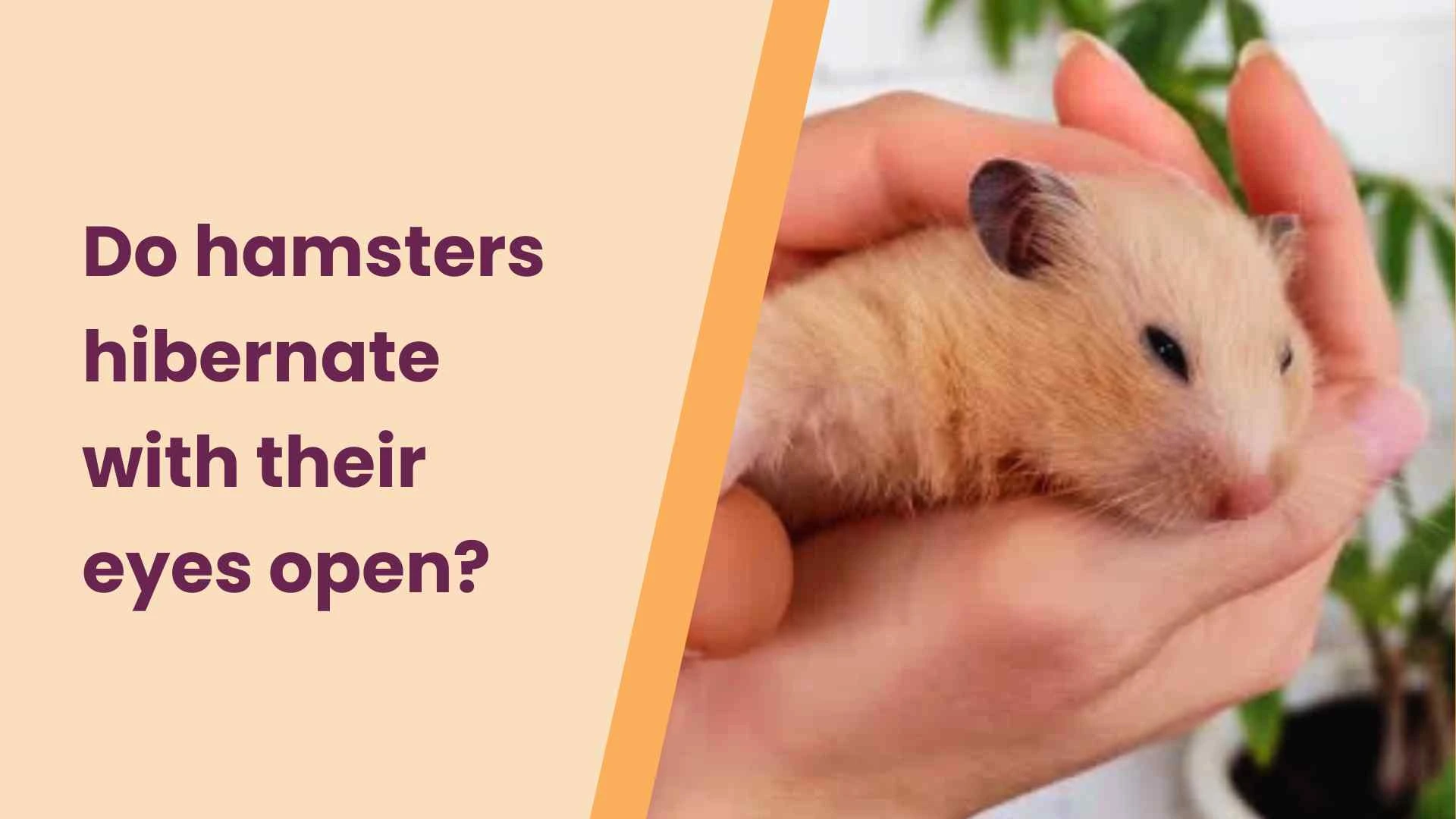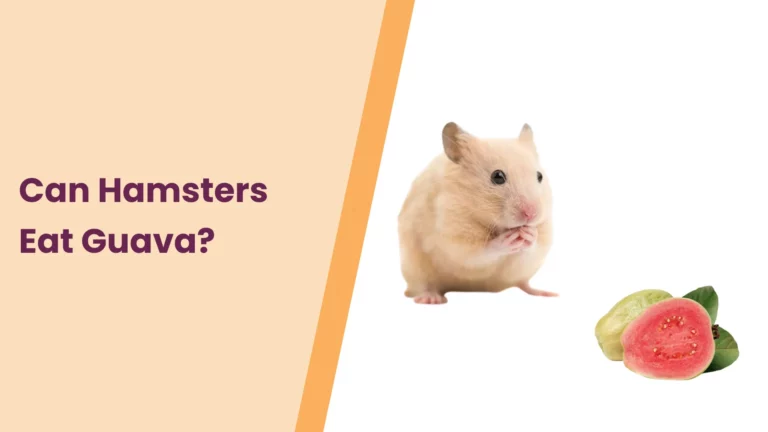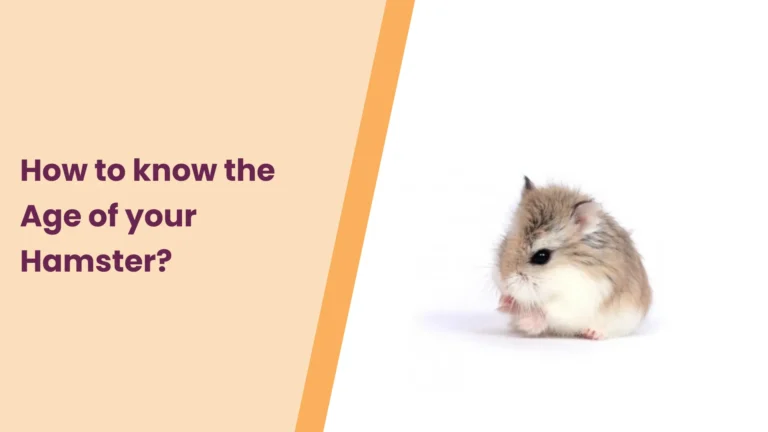Do Hamsters Hibernate With Their Eyes Open? – An Ultimate Guide
Hamsters, those pint-sized balls of fur, have captured the hearts of pet lovers around the world. But as adorable and charming as they are, these tiny creatures have their mysteries, like the perplexing question that often leaves hamster enthusiasts pondering: “Do hamsters hibernate with their eyes open?” It’s a query that brings a touch of curiosity to the world of hamster care.
Understanding the intricacies of hamster behavior isn’t just about satisfying our curiosity, though; it’s an essential aspect of being a responsible pet owner. Join us on this journey as we uncover the truth behind hamster hibernation, debunk myths, and gain insight into the fascinating world of these little nocturnal companions. Get ready to discover the secrets that lie behind those twinkling hamster eyes!
Hamster Hibernation Explained
Defining Hibernation in the Animal Kingdom
Hibernation, a remarkable survival strategy observed in many animals, is an adaptation that allows certain species to conserve energy during harsh environmental conditions, typically in colder seasons when food is scarce. This state of dormancy helps them maintain their energy reserves and survive until more favorable conditions return. It involves a significant reduction in metabolic rate, body temperature, and physical activity, effectively allowing the animal to “shut down” temporarily.
Hamsters do not technically hibernate (The State of Torpor Explained)
When it comes to hamsters, the term “hibernation” often surfaces in discussions about their behavior. However, hamsters do not technically hibernate in the same way as, say, bears or ground squirrels. Instead, they enter a state known as torpor. Torpor is a form of temporary hibernation-like dormancy, but with some notable distinctions.
How Torpor Differs from Traditional Hibernation
In traditional hibernation, animals enter a prolonged period of deep sleep, often lasting several months, during which they are virtually unresponsive to their surroundings. Their body temperature drops significantly, and they rely on stored body fat for sustenance.
Hamsters, on the other hand, experience a milder form of dormancy known as torpor. During torpor, their metabolic rate decreases, but it’s not as profound as in traditional hibernation. Hamsters may go into torpor for shorter periods, often just a few days at a time, and their body temperature doesn’t drop as dramatically. This allows them to periodically awaken to eat and drink before returning to their torpid state.
Species of Hamsters More Prone to Torpor
It’s worth noting that not all hamster species are equally prone to torpor. Some, like the Syrian hamster (also known as the golden hamster), are less likely to enter this state in captivity, especially when provided with a stable and warm environment. In contrast, certain wild hamster species, such as the European hamster, are more inclined to enter torpor as a means of conserving energy during extreme weather conditions.
Understanding the distinction between hibernation and torpor is crucial for providing the right care for your pet hamster, as their needs may differ from those of animals that truly hibernate.
Hamster Sleep Patterns
Understanding Nocturnal Creatures
Hamsters are fascinating nocturnal creatures, which means that they are most active during the night and tend to sleep during the day. This behavior is an adaptation to their natural environment, where they would typically forage for food, socialize, and exercise under the cover of darkness to avoid predators.
The Phases of Hamster Sleep
Hamsters, like humans, go through various sleep phases. They experience periods of light sleep, deep sleep, and brief moments of wakefulness during their nocturnal activities. During the deep sleep phase, hamsters may exhibit behaviors that could lead to misconceptions about their wakefulness.
Deep Sleep and Its Appearance
Deep sleep in hamsters is characterized by a state of profound relaxation, where their body appears completely still. You may notice that their breathing becomes slower and more regular, and they often curl up into a cozy ball. Their whiskers, which are highly sensitive, may also become less rigid during this time.
The Misconception of “Awake” Sleeping Hamsters
One common misconception among hamster owners is that their pets are “awake” during deep sleep because their eyes remain open. In reality, hamsters do close their eyes during deep sleep, but their eyelids are very thin and nearly translucent. This makes it appear as though their eyes are partially open when they’re actually closed.
It’s essential to recognize this phenomenon to avoid accidentally disturbing your sleeping hamster, thinking it’s awake. Hamsters need their undisturbed sleep to stay healthy and active during their active nighttime hours.
By understanding these sleep patterns and the unique physiology of hamsters, you can ensure your pet enjoys a restful and undisturbed sleep, contributing to their overall well-being.
The Myth of Open-Eyed Hibernation
Debunking a Common Misconception
One of the enduring myths about hamster behavior is the belief that these small rodents hibernate with their eyes open. While it may seem plausible at first glance, it’s essential to debunk this misconception and shed light on the reality of hamster eyelid physiology.
Hamster Eyelid Physiology
Hamsters, like many mammals, have eyelids designed to protect their eyes and keep them moist. However, their eyelids are incredibly thin and nearly transparent. This unique characteristic can lead to the illusion that their eyes are partially open, especially during deep sleep.
Inability to Keep Eyes Open During Deep Sleep
Contrary to the myth, hamsters do not hibernate with their eyes open. When hamsters enter deep sleep, their eyelids naturally close to shield their eyes from light and dust. The misconception arises because their eyelids are so thin that it can be challenging to discern when they’re closed.
The Appearance of Partially Open Eyes
During deep sleep, hamsters’ eye muscles relax, which can cause their eyelids to appear slightly open. This relaxed state can give the impression that their eyes are not fully closed, leading some to believe that hamsters hibernate with open eyes.
Understanding this phenomenon is crucial for hamster owners. It dispels the myth of open-eyed hibernation and highlights the importance of recognizing when your hamster is in deep sleep. Disturbing your pet during this time can be stressful for them, so it’s best to let them rest undisturbed.
By knowing the truth about hamster eyelid physiology, you can ensure your furry friend gets the peaceful sleep they need to stay healthy and active during their active nighttime hours.
Hamster Behavior During Torpor
Understanding Torpor in Hamsters
As we’ve established, hamsters don’t truly hibernate, but they enter a state called torpor, which is a milder form of dormancy. During torpor, several fascinating changes take place in a hamster’s body to help them survive challenging environmental conditions.
Decrease in Body Temperature and Metabolic Rate
One of the hallmark features of torpor is a significant drop in body temperature and metabolic rate. Hamsters deliberately lower their body temperature to conserve energy, and their metabolism slows down considerably. This energy-saving strategy allows them to endure periods when food is scarce, such as in the wild during winter.
Curling Up and Appearing Motionless
When a hamster enters torpor, they may exhibit behaviors that make them appear motionless. You might notice your pet curled up in a tight ball, resembling a miniature, fluffy version of themselves. This curled-up posture helps them retain body heat more efficiently and further reduces energy expenditure.
The Importance of a Quiet Environment
During torpor, hamsters are in a state of rest and conservation. It’s crucial to maintain a quiet and undisturbed environment during this time. Any disturbances, such as loud noises or sudden disruptions, can cause stress to your pet and disrupt their torpor. Prolonged or frequent disturbances could even lead to hamsters coming out of torpor prematurely, which is not ideal for their health.
Respecting their need for tranquility during torpor is an essential aspect of responsible hamster care. Ensure that their habitat is located in a peaceful area of your home, away from noisy appliances or high-traffic zones, to allow them to enjoy uninterrupted periods of rest.
By understanding and respecting the natural behavior of hamsters during torpor, you can contribute to the well-being and comfort of your furry companion.
Signs of a Healthy Hamster
Indicators of Well-Being
Ensuring the health and well-being of your hamster is a top priority for any responsible pet owner. While understanding their sleep patterns and behaviors is vital, it’s equally essential to be aware of the signs that your hamster is thriving and content.
1. A Shiny Coat
A healthy hamster typically boasts a soft and lustrous coat. Their fur should be clean, free from mats or clumps, and shine with a healthy sheen. Regular grooming and a balanced diet contribute to this characteristic. If you notice a dull, unkempt, or disheveled coat, it might indicate an underlying health issue that requires attention.
2. Alertness When Awake
When your hamster is awake during its active nighttime hours, it should display a degree of alertness and curiosity. Healthy hamsters are known for their inquisitive nature, exploring their environment, sniffing, and sometimes even nibbling on objects they encounter. This behavior demonstrates mental and physical vitality.
3. Regular Eating and Drinking
Consistent eating and drinking habits are strong indicators of a hamster’s well-being. A healthy hamster will have a healthy appetite and regularly consume food and water. Monitor their food dish and water bottle to ensure they are being used regularly. Any noticeable changes in eating or drinking patterns should be investigated promptly, as they may be signs of illness.
The Role of Diet and Care in Preventing Torpor-Related Issues
Maintaining a balanced diet and providing proper care play a crucial role in preventing torpor-related issues in hamsters. When hamsters receive a diet rich in nutrition and variety, their bodies are better equipped to handle torpor periods effectively. Adequate hydration and access to fresh water are also essential in this regard.
By offering a comfortable and stress-free environment, a well-structured diet, and regular interaction and playtime, you can help keep your hamster healthy and content. These factors collectively contribute to preventing disturbances in their natural sleep patterns and minimizing the likelihood of issues related to torpor.
Remember that regular check-ups with a veterinarian who specializes in small animals can provide additional peace of mind and ensure your furry friend remains in the best of health.
Conclusion
In our exploration of hamster behavior and sleep patterns, we’ve unraveled some intriguing truths about these endearing little creatures. First and foremost, it’s crucial to clarify the common misconception: hamsters do not hibernate with their eyes open. Their thin, nearly transparent eyelids may give the appearance of partially open eyes during deep sleep, but in reality, they’re resting peacefully.
Understanding these nuances of hamster behavior is not just about satisfying our curiosity; it’s a fundamental aspect of responsible pet ownership. To ensure the well-being of your furry friend, it’s essential to provide a suitable environment that respects their natural sleep patterns. Offer a quiet and undisturbed space during their active nighttime hours and create a balanced diet that supports their overall health.
Remember, a healthy hamster boasts a shiny coat, alertness when awake, and regular eating and drinking habits. By prioritizing their comfort, nutrition, and care, you can contribute to a happy and thriving hamster companion.
In the end, the world of hamsters is a captivating one, filled with wonder and surprises. By dispelling myths, understanding their behavior, and providing the right care, you can embark on a delightful journey of companionship with your small, furry friend.
“We hope you’ve found this exploration of hamster behavior both enlightening and enjoyable. We’re eager to hear your thoughts and experiences with these charming little pets. Have you ever observed your hamster’s unique sleep patterns or encountered any misconceptions about their behavior? Feel free to share your stories, questions, or insights in the comments below. Your contributions not only enrich our community but also help fellow hamster enthusiasts learn and grow in their understanding. If you found this information valuable, consider sharing this article on your favorite social media platforms, so others can benefit from it as well. Let’s continue to celebrate the delightful world of hamsters together!” – Hamsterpit.







